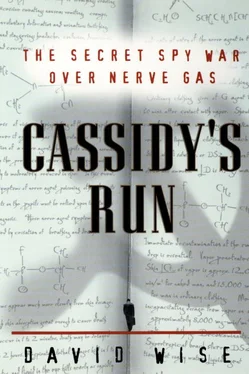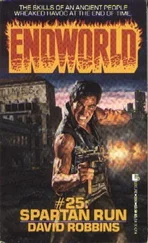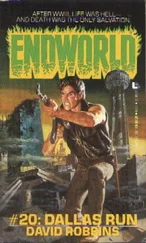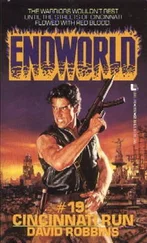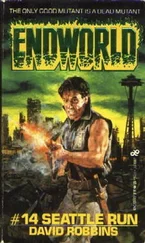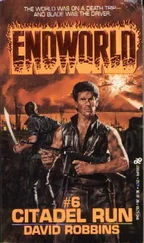Likhachev was not his real name, however. The GRU man was using his wife’s maiden name in his career as a spy, probably to avoid any potential embarrassment to the memory of his father, a decorated Soviet general during World War II. Likhachev’s father, General Ivan Chernyakhovsky, was killed in action in February 1945. [4] In recognition of his service, the Soviet government awarded a lifetime pension to his widow and money to his children, Oleg, the future spy, and his sister, Neonila, until they completed their educations. Likhachev’s father-in-law, Ivan A. Likhachev, was a major player in the industrial development of the Soviet Union and ran the Stalin automobile factory for years. He was familiar with American automobile production and design, having toured all the major auto plants in the United States during the early 1930s. He had even worked at Ford plants in the United States for two years.
Had Likhachev been caught in a spy scandal and expelled from the United States or another country, there would be nothing to connect him with his famous father.
“I was steaming,” Cassidy recalled. “I said, ‘Jeez, Mike, I just got married and you send me off to a foreign country and nobody shows.’ He said, ‘You were supposed to have been told the meeting was canceled.’ That’s all he said.”
Jack O’Flaherty, soon to become Cassidy’s new FBI case agent, had his own theory about the hat dance the GRU put Cassidy through in Mexico. “It could have been a test to see if he would leave the country,” Flaherty said. “If he resisted, they might conclude he was under control.”
By the springof 1969, Cassidy had been stationed at Edgewood for seven years, and the FBI began to fret that the Russians might regard it as a suspiciously long time for him to remain in the same job. Moreover, the nerve-gas deception was winding down after three and a half years.
It had been difficult enough to keep Cassidy in the Edgewood lab as it was. Shortly after his marriage, Cassidy was informed by the army that he was being sent to Karlsruhe, Germany. There was some suspicion within the FBI that the army wanted to transfer Cassidy there so it could take over the case. (Because the FBI operates primarily within the United States, if the case moved abroad the army would have jurisdiction.) Morrissey managed to outflank the army and squelch the transfer. According to Charlie Bevels, the FBI had to maneuver around the army bureaucracy more than once.
“Cassidy’s name kept showing up on a list for Vietnam,” Bevels recalled, “and every six months or so Jimmy Morrissey had to go to the Pentagon and get his name off the list. Joe was uneasy because he couldn’t explain it to anybody. He didn’t want any special privilege.”
The army inadvertently solved the bureau’s problem that spring by promoting Cassidy, a master sergeant, to an E-9, the rating for sergeant major. “Since there was no E-9 slot at Edgewood, I had to find a slot,” Cassidy said. “I checked and found one open at the United States Strike Command [STRICOM], in Tampa, Florida. I put in a request for transfer.”
Unknown to Cassidy, the FBI was orchestrating his move to Tampa. The bureau, Phil Parker recalled, saw a major benefit that might flow from the transfer. “The GRU’s officers in the embassy could not meet him in Florida, because of travel restrictions on Soviet diplomats, who were normally confined to a twenty-five-mile radius of Washington.” As a result, he said, the FBI hoped that the move would force Moscow to surface a new contact, perhaps an illegal, who might lead the FBI to other unknown Soviet agents.
Nothing is easy in the bureaucracy. If the FBI was going to run an espionage operation out of STRICOM, the military had to be told. Tom O’Laughlin, the ex-FBI man then working for the Joint Chiefs, was designated to bell the cat. He traveled to Tampa and briefed the base commander, a four-star general. O’Laughlin was successful in his delicate mission. The general agreed to accept Cassidy.
Operation SHOCKER was now set to move to Tampa. STRICOM, located at MacDill Air Force Base, was the Pentagon’s unified command for a large group of army, air force, navy, and Marine Corps units around the country. The command was created in 1962 by President John F. Kennedy. As its name implies, its purpose was to allow the military to respond quickly to a flare-up anywhere in the world.
In July, as Cassidy prepared to move to Florida, he received instructions from Oleg Likhachev to return on the day after Christmas to Washington, where he would meet “an old friend.” [1] Cassidy had thirty days’ leave every year and could get away almost any time, but the Soviets may have reasoned that it would look normal for him to travel around holidays.
While Cassidy would have no difficulty getting leave to make the trip north, for the moment these instructions frustrated the FBI’s plan to force the Soviets to reveal a new contact.
The following month, Cassidy said good-bye to Jimmy Morrissey and Charlie Bevels, and he and Marie left for Tampa. He contacted the Tampa FBI office and met with Dennis R. Dickson, who served briefly as his case agent. In the files of the Tampa office, WALLFLOWER was given a code number, TP510. [2] TP stood for “Tampa.” He was also given another coded designation, TP510-OA. The last two letters stood for “operational asset.”
He and Marie bought a house on the water in St. Petersburg.
At FBI headquarters, Gene Peterson chose a new code name, ZYRKSEEZ, for the case that the FBI had up to then designated as CHOWLINE and the Joint Chiefs called SHOCKER. Peterson chose the loopy spelling of Xerxes for a crafty practical reason: He knew he would be able to use it right away, without the usual bureaucratic delay for approval. The panjandrums in charge of such matters could see at a glance that ZYRKSEEZ was unique; it would not have to be laboriously checked against previous bureau code names because there was no way in the world it would duplicate a cryptonym already in the files. [3] Xerxes, the Persian king, was only indirectly the source of the code name. Peterson rode into headquarters every day with an FBI agent whose initials were F.X. and whose nickname was Xerxes. The name popped into Peterson’s head as he was casting about for a new cryptonym. Although Peterson had his own reasons for the phonetic variation, the FBI sometimes deliberately skews code words to give them added security. A mole inside the FBI who overheard the code name ZYRKSEEZ for example, would very likely look in files under the letter X and not find it.
Even so, Peterson was given a hard time over the code name. A few days later, someone from the records branch called him, complaining vociferously about the unusual spelling.
“What’s with this ZYRKSEEZ?” the file keeper asked. “We can’t pronounce it.”
“You don’t have to pronounce it,” Peterson shot back. “All you need to know is where to file the damn card.”
In December, as instructed, Cassidy returned to Washington. On the day after Christmas, he waited on a street in Prince Georges County, Maryland, at the designated time. As promised, an “old friend” appeared.
Mikhail Danilin, by now a second secretary of the Soviet embassy, was back from Moscow. He smiled broadly at the sight of the agent he had lamented he might never see again.
After the two men had greeted each other, Danilin instructed Cassidy to pick out several drop sites in the St. Petersburg area. That would be good news to the FBI; the bureau’s plan appeared to be working.
Danilin told Cassidy to bring the description of the locations to their next meeting. Once the drops were agreed upon, Danilin said, Cassidy was to buy a camera, photograph military documents from MacDill, and place the film in hollow rocks at the drop sites at designated times and dates. The agent who cleared a drop would leave a paper bag as a signal that the film had been picked up. Cassidy was to return to the drop site each time and verify that the paper bag was there.
Читать дальше
